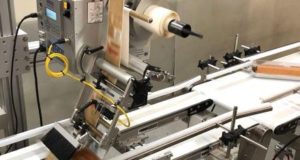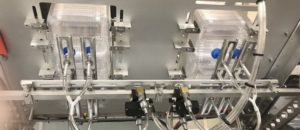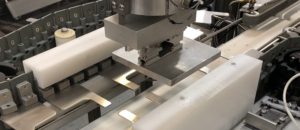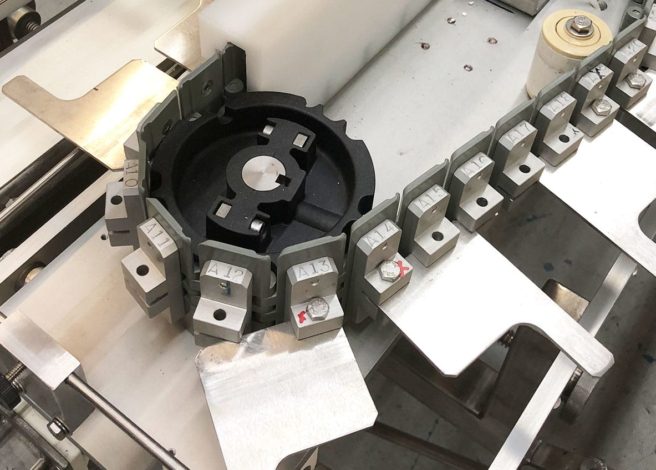When evaluating your food business strategy, consider automation as more than just industry jargon — it’s a transformative approach. Automation can revolutionize operations across processing, baking, packaging, distribution, and restaurants. When should you seriously consider automation? How do you know if it’s the right move for your business? And are you ready to make the changes it requires? As you explore the possibility, think about key factors like where the system will go, whether you have the right team to run it, and if it makes more sense to implement it in phases rather than all at once.
We know that change can be scary, especially involving your business. Worry not; we are here to help. For over 50+ years, we’ve teamed up with food brands, processors and retailers. We’ve learned about their challenges and tackled real packaging issues. Together, we develop smart automation solutions.
Let’s discuss when, why, and how automation might be your next smart business move.
When Should You Consider Automation?
Remember when your operation was small enough that everyone knew each other’s lunch preferences? Those were simpler times. Now, orders are piling up faster than empty coffee cups in the break room, and your team is stretched thin. Automation might be your next logical step when your workforce can’t meet demand.
Make no mistake: the need for automation is a good thing. It means your business is thriving, and your output has begun to outpace your capabilities. When it’s time to turn to automation, it’s also time for high-fives among your team.
Before proceeding, you may have some questions about the effects on your workers and your company’s location.
How Does Automation Affect Workers?
 With minimum wages increasing nationwide, many companies are at a turning point. They must decide whether to hire more employees at higher rates or invest in automation. It’s not just about cutting costs — it’s about strategic allocation of human resources. Some businesses have discovered that automation allows them to maintain their staff size while significantly increasing production.
With minimum wages increasing nationwide, many companies are at a turning point. They must decide whether to hire more employees at higher rates or invest in automation. It’s not just about cutting costs — it’s about strategic allocation of human resources. Some businesses have discovered that automation allows them to maintain their staff size while significantly increasing production.
When introducing automation, addressing employee concerns about job security is essential. Rather than eliminating positions, effective automation allows you to:
- Reassign workers from repetitive tasks to more value-added roles
- Reduce physical strain while increasing production capacity
- Transform existing roles into more skilled positions
For example, a bakery might consider automation for mixing but still need skilled decorators, or a restaurant might automate order-taking while elevating servers to customer experience specialists.
By clearly communicating how automation complements rather than replaces your workforce, you can potentially increase workplace satisfaction as employees move from repetitive tasks like “closing lids” to more engaging responsibilities.
Location, Location, Automation
Some food companies are looking to move their entire operations to areas where it costs less to operate. Before you go down a Zillow rabbit-hole, remember that smart automation can help you stay competitive without the need to move. Sometimes, the solution isn’t moving your business — it’s moving your business forward.
The ROI of Electronic Helpers
Not all robots are scary, especially when helpful, like Rosey from The Jetsons!

Return on investment (ROI) calculators help you find out when your investment becomes profitable. The equipment might seem expensive at first. However, when considering the ongoing costs of extra labor, benefits, training, and turnover, machines often save money in the long run. You can look at our automation ROI calculator right here! Tools like this are essential when you’re company begins to consider automation.
The return on automation isn’t just financial. Concentrate on how consistent your product is. This helps reduce human errors. You can also speed up production quickly when that big contract comes in. These benefits don’t always appear neatly on spreadsheets but can be the secret sauce that propels your business from surviving to thriving.
Types of Automation: Finding Your Fit
For restaurants, it might be automated ordering systems or kitchen display technologies. Bakeries might focus on mixing and portioning equipment. The beauty is that you don’t need to automate everything at once — start with the painful bottlenecks that make your staff dream of career changes.
In food packaging automation, there are several modules. It can seem like a lot of information to take in at once, but trust us, it’s easy! Let’s take a look at these business-optimizing solutions. You’ll soon wonder how you ever lived without them.
De-nesters: systems at the beginning of the line that separate containers, getting them ready for the conveyor belt to the weigh and fill system.
Filling systems: these portion with precision, ensuring each container gets the same amount of product.
Closers: these shut the containers creating a secure seal, ensuring food safety.
Labelers: maintain brand consistency by placing labels on the same part of the package each time, utilizing inkjet printers for that perfect date code.
Conveyers: move packages between different areas of the operation with speeds designed for efficiency.
Custom vs. Standard Solutions
Some automation solutions are common in the industry, while others are made for specific products. A great method combines standard parts for common tasks and custom features for specific products. Remember, you’re not reinventing the wheel — you’re just making sure it rolls perfectly for your operation.
Practical Considerations with Automation

Let’s be honest: the biggest challenge in implementing automation isn’t technical; it’s human. Your chefs are artists, not mechanics. Your team will adapt to new equipment and processes, and there will be a learning period. Patience and proper training are your best ingredients here.
Another common challenge is finding personnel who can maintain and optimize automated systems. Small and medium-sized processors and other businesses rarely have full maintenance departments. Consider whether you’ll need to hire new talent or train existing staff to keep your new mechanical helpers humming along.
The Future is Flexible
The best automation solutions grow with you. They’re flexible enough to change with your business. This includes adding new product lines or increasing production. When exploring options, ask “Will this solve today’s problems?” and “Will this adapt to tomorrow’s opportunities?” After all, you don’t want to invest in the automation equivalent of a flip phone right before the smartphone revolution. There is tremendous value in finding a vendor that can build a tailored system for your operations and will grow with you and support your operations as you expand.
Is Automation Right for You?
Automation isn’t about replacing the human touch that makes your food business unique — it’s about enhancing it. For chefs, it means more time for creativity and less for mundane prep. It might mean consistent product quality even during peak seasons for bakery owners. For distributors, it could mean error-free order fulfillment and happier clients.
Is automation right for you? If you’re having trouble keeping up with demand, facing higher labor costs, or want to grow without hiring more people, then the answer is likely yes. The key is finding the right level of automation for your current needs and future goals.
Remember, food empires aren’t built on elbow grease alone. What is the gap between a corner café and a culinary kingdom? Smart tech at the right time. Your recipe for growth might just need a dash of automation.
We believe in finding the right fit, not just any fit. Reach out for honest guidance without pressure. Inline Plastics is here to answer your questions. Also, check out our Automation ROI Calculator today and see how much we can help you save!


